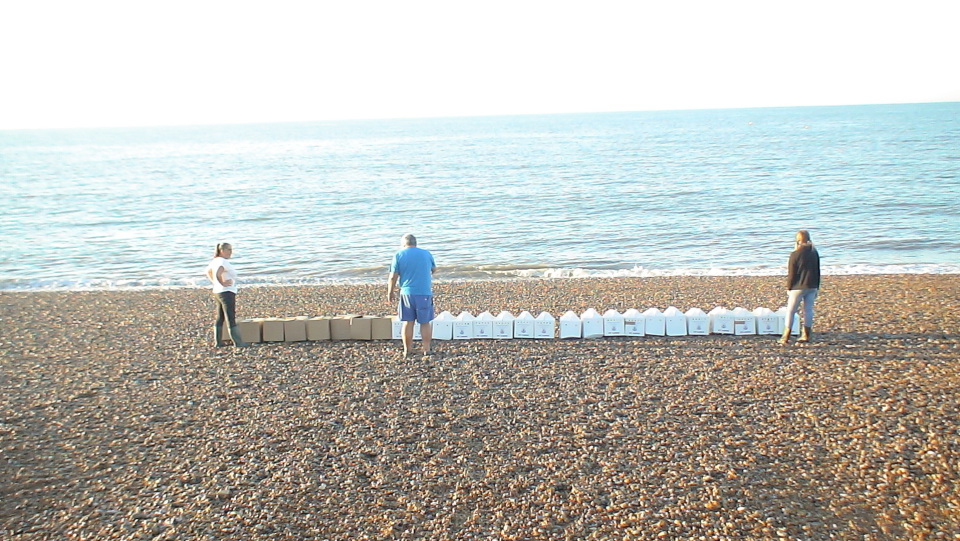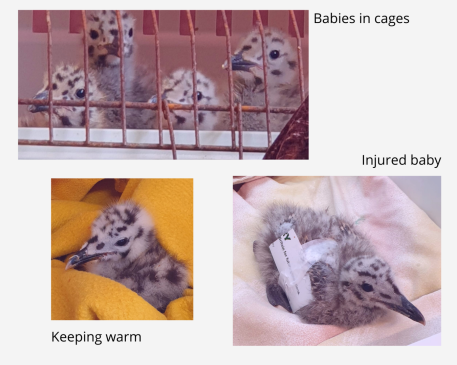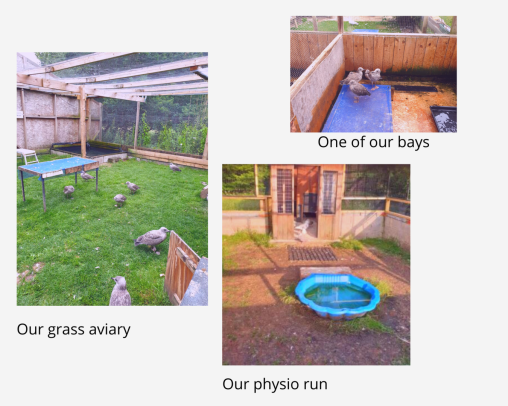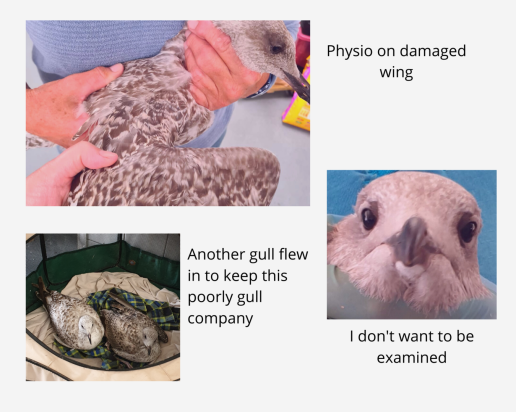
Rehabilitation
HUNDREDS OF BIRDS
All birds come to our hospital first for assessment. As soon as possible they will be moved to whatever environment suits their needs best. Tiny babies and seriously ill adults will be in cages, but most larger birds will be given more space and the company of others. Even a gull with a broken leg can often hop around on the hospital floor with others.
Over the years we have constantly added to our facilities so that, whatever the disability, injury or temperament, a suitable enclosure can be found. The options include stables, small aviaries, large aviaries, enclosures on concrete or grass. A broken leg or wing will need strapping for the minimum amount of time needed to heal without causing joints or muscles to seize up. Even uninjured birds need to be monitored and moved along at the right time to get them ready for release. Babies can easily be set back by being moved into a large space too soon.
Even In the busiest baby season we have never closed our doors. The work is non stop between 8am and 11pm throughout the summer with no break. There are times, when we are waiting for the next release, when it feels like we are going to drop from exhaustion or burst at the seams. Thank goodness gulls only have one set of babies a year so we focus on the fact that the end is in sight. Every year there are adults and babies that cannot be released. Sometimes they need more time but others have disabilities that mean they can never go free. We then focus on placing these birds in whatever enclosure and social group will suit them best. We are busy all year round as we now have so many permanent residents.
Throughout the year we get many requests from other rescuers to take in their disabled birds. We often say no because we would soon be full. We are happy to take injured birds from anyone, but do object to people who want us to have ones that they have already treated. Maybe these birds could have gone free if we had been given them immediately but, either way, we are being asked to make a possible 30 year commitment as that is how long these birds can live. Please consider what you will do with any non release birds before deciding to try rehabilitation. We keep ours but cannot be responsible for everyone else's. It only takes 5-10 days for a broken limb to heal. If set wrong, or not given appropriate physio to prevent calcification of joints, the damage done will be irreversible.
If you support our no kill policy then please donate to our rescue. Gulls are not catered for in many places because of the space and money needed to look after them. We give our birds the best facilities and care which comes at a huge monetary cost. It would be understandable if people think that, because of the high number of birds helped, there is a team of workers backed by a large organisation. Unfortunately it is one gull loving lady with a long suffering husband!




